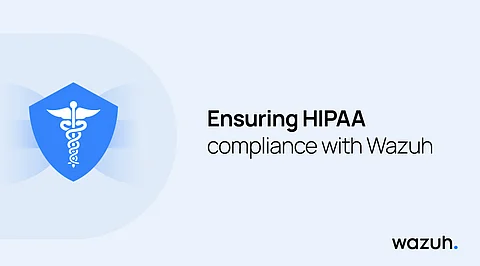

The Health Insurance Portability and Accountability Act, HIPAA, is a compliance standard that regulates the lawful use and disclosure of protected health information. Its primary purpose is to ensure that individuals' medical information is secure and private. It also provides guidelines for the electronic transmission of health data.
The features of the HIPAA compliance standard include portability, accountability, privacy, and security. These features are essential to health data privacy because they enhance data security, protect a patient’s privacy, and provide a legal framework for healthcare providers.
The HIPAA Security Rule is a component of the HIPAA compliance framework and is a standard developed to guide healthcare organizations in mitigating the risk associated with data breaches. This rule sets standards for protecting electronic protected health information (e-PHI) and mandates appropriate administrative safeguards to ensure confidentiality, integrity, and security.
The primary goal of the HIPAA Security Rule is to protect the confidentiality, integrity, and availability of electronically protected health information (e-PHI). This can be achieved by adopting administrative, physical, and technical safeguards.
This post shows how to use the Wazuh SIEM/XDR platform to ensure the technical safeguards of the HIPAA Security Rule.
Technical safeguards refer to the technology that protects e-PHI. These safeguards include access controls, audit logs, and encryption. Wazuh is a Security information and event management (SIEM) and extended detection and response (XDR) platform that addresses these challenges by providing capabilities such as Log data analysis, File Integrity Monitoring (FIM), and compliance checks.
Here are a few objectives of the HIPAA Security Rule technical safeguard and how they relate to Wazuh:
Audit Controls (164.312(b)): This objective implements measures to ensure that the activity of systems containing e-PHI is recorded and examined. Wazuh meets this objective by providing Log data analysis capabilities and a HIPAA compliance dashboard. This helps in quick threat detection and incidence response within your infrastructure.
Integrity (164.312(c )(1)): Protects ePHI from being altered or destroyed in an unauthorized manner. Wazuh assists in meeting this objective by providing the File Integrity Monitoring capability, which detects file changes and notifies respective administrators.
Wazuh includes other capabilities such as malware detection, security configuration assessment, active response, vulnerability detection, and command monitoring. These capabilities also cover some other HIPAA Security Rule technical safeguard objectives.
The following section shows how Wazuh helps to accomplish the HIPAA Security Rule technical safeguard Audit Controls (164.312(b)) and Integrity (164.312(c )(1)) objectives.
Wazuh uses the Log Data Analysis module to ensure HIPAA compliance by collecting and aggregating logs from monitored endpoints, applications, and network devices. These logs are then analyzed in real-time for events of interest. Wazuh analyzes events from monitored endpoints with decoders and rulesets, maps relevant information, and displays it on the dashboard
All systems generate logs, which can usually be used for auditing purposes. Over time, these logs can produce events that indicate abnormal operations, which the security teams can review. Detecting these abnormal operations helps identify malicious events promptly before they crystallize.
The following configuration sample will ingest logs from the <location> tag for log data analysis:
Where:
<location> is the folder or file being monitored
<log_format> is the format of the log file. It can be JSON or Syslog.
The image above shows the log activity of a PowerShell operation in a Windows endpoint. This means if the event is a cybersecurity incident, it can be promptly viewed and assessed.
The Wazuh File Integrity Monitoring (FIM) module enables HIPAA compliance by monitoring file change activities. Changes are detected in real-time, and alerts are generated on the Wazuh dashboard to notify administrators.
The Wazuh FIM module periodically runs scans on the operating systems being monitored, namely Windows, macOS, and Linux.
The above image shows that a file /test/fim-test.txt has been modified on a monitored Ubuntu endpoint.
The Wazuh dashboard provides compliance-specific monitoring and reporting for various regulatory frameworks, including HIPAA, NIST, PCI DSS, GDPR, and TSC. These dashboards monitor the issues in your environment related to these regulatory frameworks.
The Wazuh HIPAA dashboard gives a quick view of violations, a timeline of the generated alerts, the top requirements needing fixing, and the top alert-generating agents.
Wazuh provides capabilities that help safeguard electronic Protected Health Information (ePHI), including log data analysis, file integrity monitoring, malware detection, security configuration assessment, and more. These capabilities can help your health institution align with the HIPAA Security Rule requirements by ensuring that infrastructure containing the ePHI stays protected, maintains integrity, and remains available to the right users.
